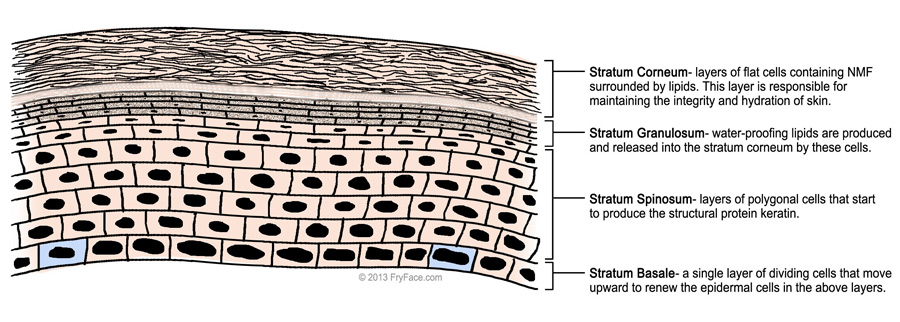The skin is the largest organ of the body and has several functions: Receptors in the skin provide sensory information like touch, vibration, and pain. The skin helps maintain a constant body temperature, and is a physical barrier to the elements of the environment, providing protection from bacteria, ultraviolet light, and chemicals. But it is the skin’s ability to create a barrier to water loss that is its most crucial function.
The skin is comprised of the following layers:
- Epidermis – outermost layer which consists of the following:
- Stratum corneum: The most mature non-living skin cells (corneocytes) are comprised primarily of a structural protein called keratin. These cells contain a collection of water-soluble compounds call Natural Moisturizing Factor (NMF.) Cells in this layer are surrounded by a fatty lipid layer making the skin virtually water repellent. These cells continually shed and are replaced by cells in the layers below.
- Stratum granulosum: Comprised of less metabolically active cells than the ones below them, these cells produce the lipids that are released into the stratum corneum.
- Stratum spinosum: Multiple layers of living polygonal skin cells (keratinocytes) produce keratin and ultimately mature to form the stratum corneum.
- Stratum basale (Basal layer): The deepest layer of the epidermis comprised of a single row of cells that divide to form new keratinocytes to replace the ones that are continuously shedding from the skin’s surface.
- Dermis – comprised primarily of collagen to give strength and flexibility. Also contains receptors for pain and touch.
- Fat layer (Sub cutis) – helps preserve heat and acts as a ‘shock absorber’ for protection from injury.

